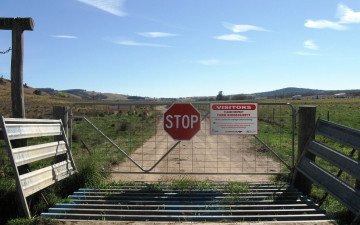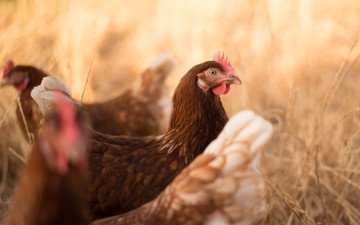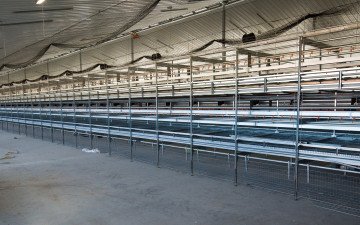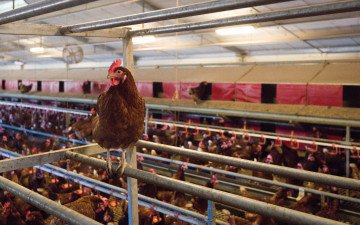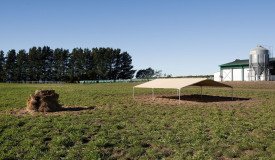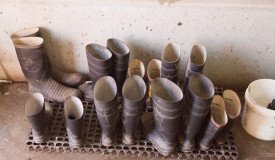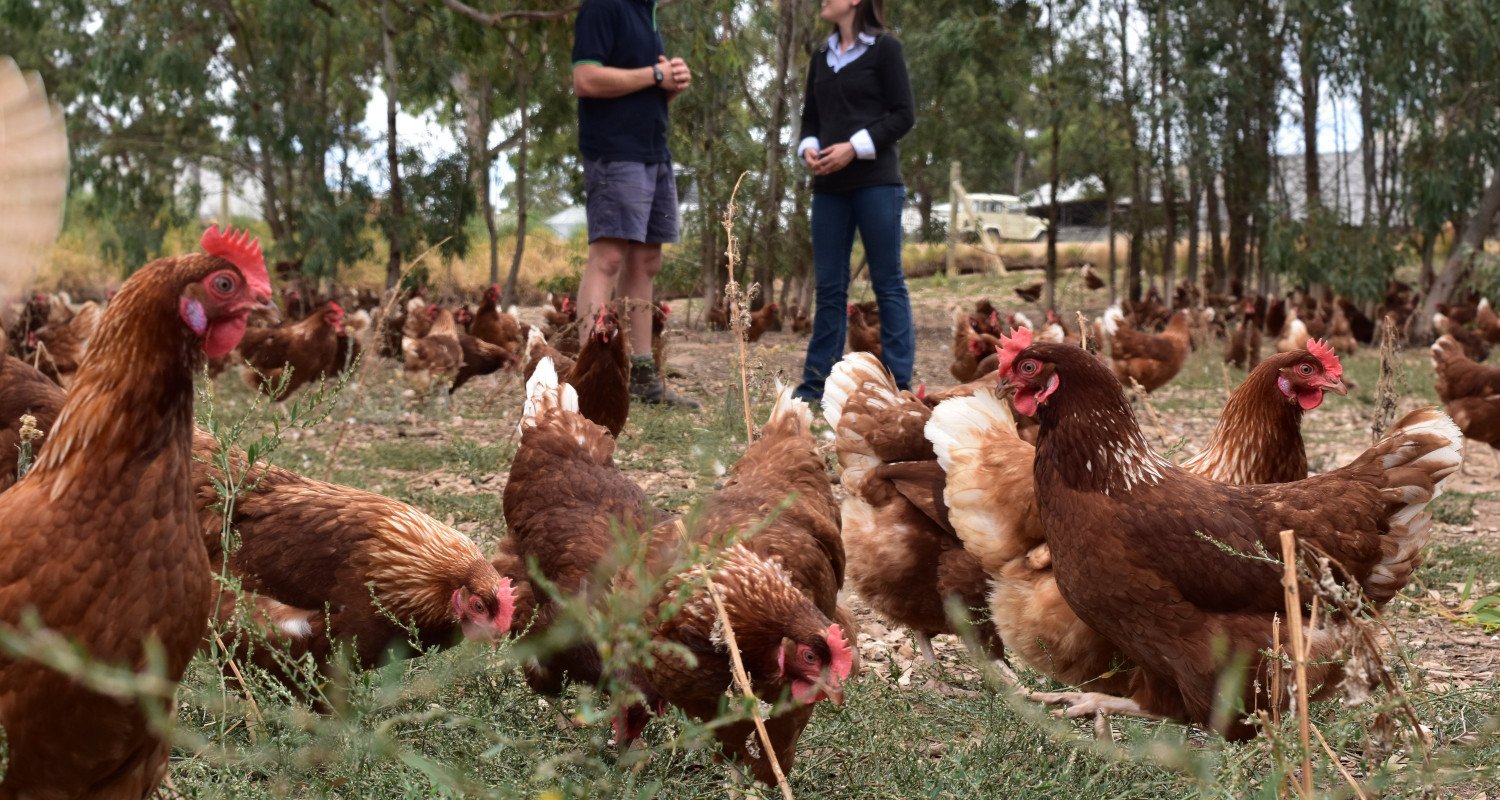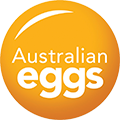
Leading Research: in Biosecurity & Flock Health
Maximising the health and productivity of hens is fundamental to maximising egg production and achieving satisfactory egg quality.
The increasing proportion of free range hens in recent years and the greater variability within free range production systems has the potential to impact the reliability of egg supply and consumer confidence.
Investment in R&D will focus on the investigation of short term, industry transferable solutions to hen disease and biosecurity threats, as well as long term research investigating the development of vaccines and therapeutic medicines to ensure that we are addressing more complex issues. The intended outcome is lower hen mortality rates, less and shorter breaks in production and consequently, increased productivity.
To assist the industry in maintaining strict biosecurity Australian Eggs has produced a range of resources to translate research learnings into helpful on-farm resources. The booklets can be downloaded below, or ordered in printed format from Australian Eggs.
Key Resources
Current Research

Genetic restoration to protect Australian poultry against Avian Influenza
The initial stage of research found the key in chicken genetics that is responsible for high pathogenic avian influenza virus. This project builds on this important finding, by testing the most appropriate and effective intervention to prevent low pathogenic avian influenza progressing to high pathogenic avian influenza.
Investigations of upper respiratory tract infections (URTI)
Upper respiratory tract infections are becoming increasingly common on egg farms costing the egg industry by way of vaccination, medication, and overall productivity losses.

Extension and communication strategies to improve biosecurity
This project will develop the most appropriate and applicable biosecurity extension and communications
strategies that will target small, medium and large segments of the egg industry.
Effect of microbiota seeding on gut health and egg production
Extending flocks productive lifespan has been a challenge for the egg industry and remains a priority. This project aims to investigate the “seeding” of gut with beneficial organisms as a potential layer hen
management strategy to improve the gut health of hens.
Decontamination project for the Australian poultry industry
In this jointly funded project, researchers will address knowledge gaps in current decontamination procedures in the broiler and layer industries. Researchers will develop a guideline comprised of everyday decontamination procedures, which will help to manage the risk of disease infecting and spreading within poultry flocks.

Optimising performance, health, flock consistency & egg quality characteristics through management
In this project, researchers will work with free range farms to understand the management factors which influence common problems in free range systems such as variable peak of lay timing and inconsistent egg size and quality.
Completed Research
Control of Intestinal Spirochaete Infections in Chickens
Avian Intestinal Spirochaetosis (AIS) is a condition of layers and broiler breeders resulting from infection of the large intestine with anaerobic intestinal spirochaetes, which can lead to wet litter and reduced egg production.The purpose of this project was to develop improved means to control AIS.
The effect of Newcastle disease vaccination with strain V4 on the course of infections with the Peats Ridge strain of Newcastle disease virus
This study sought to deliver data from experiments on whether vaccination with V4 is effective against NDV, the Peats Ridge strain of the virus, and the serological response to infection with the Peats Ridge strain prior to vaccination. .
Optimising infectious bronchitis vaccination of laying hens for maximum egg shell quality
This study was designed to evaluate different vaccination protocols for infectious bronchitis virus in laying hens.Age at first vaccination, route of vaccine administration, regular revaccination during lay, and timing of revaccination in relation to an induced moult was investigated.
Marek's disease research in Australia - a review
This project is part of a series of trials to evaluate the efficacy of existing vaccines against a particularly virulent strain of Marek's disease which presented in the early 1990's.
Studies of cloacal haemorrhage and beak trimming in the laying hen (II)
The aim of this research project was to find evidence that supported the hypothesis that 2-3% of mortality in commercial egg industries is caused by cannibalism or oviduct dysfunction.
Effects of diet composition, gut microbial status and feed forms on cannibalism in layers
The project aimed to identify both nutritional and husbandry factors that may contribute to increase cannibalism, and to develop strategies to minimise it.
Diagnostic tools for differentiation of vvIBDV and characterisation of Australian strains
This study aimed to develop a rapid detection tool for vvIBD strains, and to demonstrate that changes in these strains can be clearly differentiated from overseas strains.
Live vaccines for three species of Eimeria
The objective of this project was to attenuate two strains of three species of Eimeria in order to candidate vaccine lines in terms of drug sensitivity.
Molecular Diagnostics for Marek’s Disease
This project aimed to develop simple cost-effective sample collection techniques to detect the presence of a vaccine in the blood of vaccinated birds.
The significance of Salmonella, particularly S. Infantis, to the Australian egg industry
This study was to expand upon previous survey work of layer flocks in Queensland by conducting longitudinal and point-in time surveys of Salmonella faecal carriage and feed contamination on farms.
Detection of vvIBDV strains and Australian variants in poultry
This topic of this study is the very virulent infectious bursal disease virus (vvIBDV) and was carried out in order to develop a diagnostic test for potentially infected poultry.
Investigations into the management of the darkling beetle
The darkling beetle is capable of transmitting diseases between chickens.This study reports on previous investigations into the insecticide resistance of darkling beetles, and highlights the need for a control plan.
New Therapeutics for Poultry
The broad objective of this project was to assess the ability of ChIFN-γ to increase broiler growth performance, enhance vaccine efficacy and improve disease resistance.
Development of a live attenuated vaccine for chicken anaemia virus
The chicken anaemia virus is associated with increased mortality rates amongst chickens.This study makes considerable progress towards developing a defined attenuated vaccine against the virus.
Hindgut function in laying hens
This report details a series of experiments designed to provide evidence of a fermentative acidosis caused in the hindgut gut of layer-type birds after changes in their diet, and the development of a commercial feed enzyme.
Projects you might find interesting
Practical strategies to increase individual layer hens feed efficiency
The overall findings of this study reveal that significant variation exists in the feed efficiency of layer hens. In this project, hens that put on more weight from the point of lay to mid-lay tended to be less feed efficient and have poorer quality eggs. The high feed efficient hens had better egg quality and were less prone to liver damage or fatty liver.

Review of rodent control for the Australian chicken meat and egg industries
This final report on current rodent control strategies employed by the Australian chicken meat and egg industries also includes a manual for producers on use of rodenticide products.

Spotty Liver Disease Epidemiology
This project identified key risk factors for Spotty Liver Disease outbreak.

On-farm Biosecurity Risk Identification Framework for the Australian layer industry
This report provides a support tool for Australian egg producers to determine biosecurity risks on-farm. As well as assisting Egg producers in understanding what constitutes a risk and why, the report offers potential management strategies to decrease on-farm risks to biosecurity.
 >
> 





